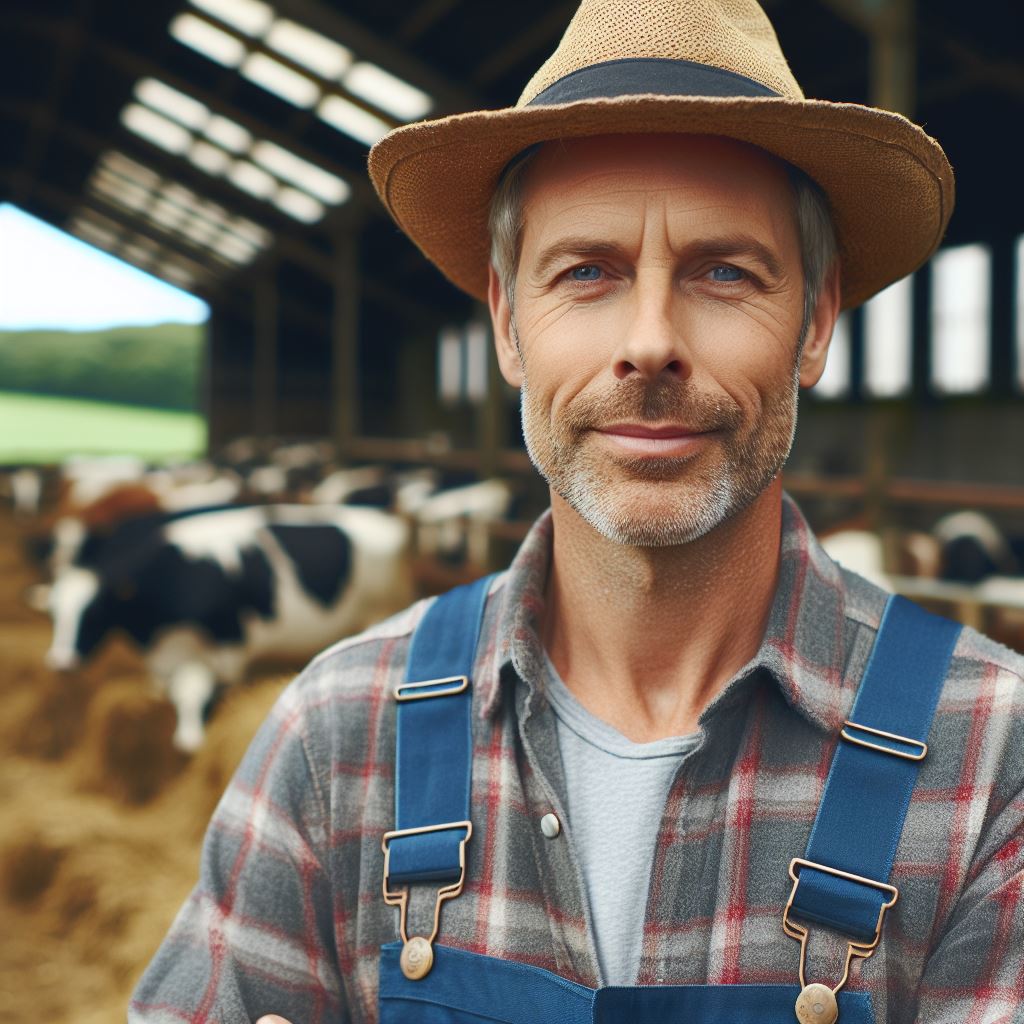Introduction
Farming subsidies in the UK play a crucial role in supporting the agricultural industry. Understanding these subsidies is essential for farmers, policymakers, and the general public.
This blog section aims to provide a comprehensive overview of UK farming subsidies, their importance, and implications.
Subsidies are financial aids provided by the government to farmers to enhance agricultural productivity. They serve as an incentive for farmers to continue producing food and ensure their economic viability.
Without subsidies, many farmers would struggle to cover their costs and keep their businesses running.
In the UK, farming subsidies are primarily administered through the Common Agricultural Policy (CAP).
These subsidies are designed to support various aspects of farming, such as environmental stewardship, land management, and rural development.
They aim to strike a balance between promoting sustainable practices and maintaining a profitable farming sector.
Importance of understanding the basics of these subsidies
Understanding the basics of UK farming subsidies is crucial for farmers to navigate and access these financial resources effectively.
It allows them to make informed decisions about their farming practices, adopt sustainable techniques, and stay competitive in the market.
Additionally, policymakers need to comprehend these subsidies to develop effective policies that address the needs of farmers and achieve broader agricultural objectives.
Moreover, the wider society needs to understand farming subsidies. It helps consumers grasp food system complexities, appreciate farmer challenges, and make informed choices for local, sustainable agriculture.
Basically, UK farming subsidies are a fundamental part of the agricultural landscape. They provide vital support to farmers, reinforce sustainable practices, and contribute to food security.
By understanding the basics of these subsidies, we can ensure a resilient and vibrant farming sector for the future.
What are farming subsidies
Different types of subsidies available in the UK
The UK government employs farming subsidies, essential for agricultural support post-Brexit. These incentives foster food security, stabilize markets, and aid rural development.
- Direct Payments: Farmers receive subsidies based on land area, influenced by historical production and environmental practices.
- Rural Development Funding: This subsidy backs farmers in business development, investing in machinery, buildings, and renewable energy.
- Agri-environmental Schemes: Encouraging eco-friendly practices, these subsidies promote biodiversity, soil health, and emission reduction.
- Knowledge Transfer and Innovation: Subsidies here drive research, knowledge exchange, and innovation in farming practices.
- Animal Welfare and Organic Farming Support: Subsidies reward adherence to higher animal welfare standards and organic farming practices.
- Young Farmers’ Support: Tailored subsidies aim to attract younger individuals into the agricultural industry.
- Market Intervention Measures: In exceptional situations, subsidies stabilize markets by buying surplus produce or compensating for price fluctuations.
Post-Brexit, these subsidies, once funded by the Common Agricultural Policy, now evolve under the UK’s independent agricultural policy.
In essence, they remain pivotal for agricultural sustainability, ensuring food security, economic stability, and environmental protection.
Personalized UK Career Consulting
Receive tailored career guidance designed just for you. Get actionable steps and expert support to boost your career in 1-3 days. Take control of your career now.
Get StartedHistory of Farming Subsidies in the UK
- Farming subsidies in the UK have a long and complex history, dating back to the early 20th century.
- During World War I, subsidies were introduced as a means to boost agricultural production and ensure food security.
- After the war, subsidies continued to be provided to help farmers recover from the economic upheaval.
- In the 1930s, the UK faced a decline in agricultural prices, leading to the implementation of price support measures.
- During World War II, subsidies were expanded to encourage increased food production and self-sufficiency.
- Following the war, the UK implemented the Agricultural Marketing Act of 1958, which provided subsidies to maintain agricultural prices.
- In the 1960s and 1970s, subsidies shifted towards income support through the introduction of direct payments.
Reasons behind the implementation of these subsidies
- The implementation of farming subsidies in the UK has been driven by several key factors.
- Ensuring food security and reducing dependency on imports has always been a primary motivation.
- Subsidies aim to stabilize agricultural markets and provide income stability to farmers.
- They also support rural development, promote sustainable farming practices, and protect the countryside.
- By subsidizing the industry, the government can influence production, supply, and land management decisions.
Significant changes and reforms over the years
- Over the years, farming subsidies in the UK have undergone significant changes and reforms.
- In the 1980s, the European Common Agricultural Policy (CAP) introduced income support based on production.
- Later, the CAP shifted towards greater emphasis on environmental and rural development initiatives.
- Reforms in the early 2000s aimed to decouple subsidies from production and increase environmental stewardship.
- Since 2015, direct payments have been capped, and eco-schemes have been introduced to incentivize sustainable farming practices.
Farming subsidies in the UK have a rich history, rooted in the need for food security, market stability, and rural development.
From their early origins in the aftermath of World War I to the modern reforms aimed at sustainability, these subsidies have evolved to meet changing agricultural and societal needs.
While debates continue about the effectiveness and distribution of subsidies, their role in shaping the UK farming industry remains significant.
Read: Innovations in UK Farm Management Techniques
Benefits of farming subsidies
Positive impact of subsidies on UK farmers
Farming subsidies positively impact farmers, ensuring financial stability amid unpredictable factors like weather and market fluctuations.
- Financial Stability: Subsidies mitigate risks, aiding farmers in coping with unpredictable situations, fostering financial resilience.
- Income Support: Crucial during economic downturns, subsidies provide farmers with essential income, enabling uninterrupted operations.
- Investment in Infrastructure: Subsidies empower farmers to modernize equipment, irrigation, and storage, enhancing productivity and efficiency.
- Stabilizing Food Prices: Contributing to stable prices, subsidies maintain a consistent agricultural product supply, benefiting both farmers and consumers.
- Environmental Conservation: Subsidies incentivize sustainable practices, rewarding farmers for soil erosion reduction, water quality improvement, and biodiversity conservation.
- Food Security: Crucial in times of shortages, subsidies support agricultural production, reducing dependence on imports for a stable domestic food supply.
- Rural Development: Supporting farmers aids rural development by sustaining local economies, creating jobs, and preserving cultural heritage.
- Encouraging Innovation: Subsidies incentivize adopting innovative technologies like precision farming, promoting efficiency and sustainability.
- Support for Young Farmers: Tailored programs in subsidies assist young farmers, overcoming financial barriers and encouraging the next generation in farming.
- Market Competition: Subsidies level the playing field, ensuring UK farmers compete with other countries, vital for the industry’s vitality and local livelihood protection.
In summary, these subsidies are crucial, ensuring financial stability, income support, sustainability, food security, rural development, innovation, and market competitiveness.
Supporting them is vital for the overall well-being of the farming community and the nation.
Read: Challenges Facing Today’s UK Farm Managers

Gain More Insights: Brexit and UK Fishermen: Challenges and Opportunities
See Related Content: Technology Trends in Modern Forestry
Criticism and challenges
Lack of effectiveness: Critics argue that farming subsidies do not effectively achieve their intended goals.
Market distortion: Subsidies can distort market prices, leading to overproduction and a lack of efficiency.
- Environmental damage: Some argue that subsidies encourage unsustainable farming practices, harming the environment.
- Inequitable distribution: Critics claim that subsidies tend to benefit large agribusinesses and wealthy landowners, further exacerbating income inequality.
- Disincentivizing innovation: Subsidies can create a reliance on traditional farming methods, discouraging innovation and technological advancements.
- Budgetary strain: The cost of subsidizing farmers can place a strain on national budgets and divert resources from other sectors.
- Trade disputes: Subsidies given to farmers in one country can create conflicts with other countries, leading to trade disputes and retaliatory measures.
- Lack of transparency: Critics highlight the opacity and lack of transparency in the distribution and allocation of subsidies.
- Inconsistent support: Farmers may face challenges accessing subsidies due to complex eligibility criteria or changes in government policies.
- Over-reliance on subsidies: Critics argue that farmers could become overly dependent on subsidies, impacting their ability to adapt to changing market conditions.
Negative consequences and challenges
- Overproduction: Subsidies can lead to increased production, which may result in surplus goods and lower market prices.
- Environmental degradation: Subsidies can unintentionally encourage environmentally harmful practices, such as excessive use of pesticides or deforestation.
- Market inefficiencies: Distorted prices due to subsidies can create market inefficiencies, leading to wasteful allocation of resources.
- Reduced competitiveness: Subsidies can shield farmers from international competition, making them less competitive in the global market.
- Barrier to entry: Subsidies may create barriers to entry for new farmers, limiting competition and innovation in the agricultural sector.
- Income inequality: Subsidies often disproportionately benefit larger farms, contributing to income inequality within the farming community.
- Ineffective resource allocation: Subsidies may divert resources towards certain crops or regions, neglecting others with greater potential.
- High administrative costs: The administrative burden of managing and distributing subsidies can be expensive and time-consuming for governments.
- Lack of incentive for reform: Subsidies can discourage necessary reforms in the agricultural sector, hindering its long-term sustainability.
- Distorted land prices: Subsidies can inflate land prices, making it more difficult for new entrants to secure affordable farmland.
Controversies surrounding distribution and allocation
- Lack of transparency: The process of distributing subsidies can lack transparency, making it difficult to ascertain fairness and prevent corruption.
- Favoritism: Allegations of favoritism and political biases in the allocation of subsidies have raised concerns among farmers and the public.
- Regional disparities: Some argue that subsidies are distributed unevenly, favoring certain regions or politically influential farming communities.
- Lack of accountability: Critics claim that there is insufficient oversight and accountability in the allocation of subsidies, leading to potential misuse of public funds.
- Lobbying influence: The influence of powerful agricultural lobbies in influencing subsidy policies has been a subject of controversy.
- Lack of farmer representation: Some argue that farmers have limited input in subsidy decision-making processes, leading to unfair outcomes.
- Unclear eligibility criteria: The criteria for eligibility and allocation of subsidies can be complex and confusing, creating difficulties for farmers.
- Inadequate targeting: Critics question whether subsidies effectively target those in need, with small-scale farmers often being overlooked.
- Overlapping subsidies: The existence of multiple subsidy programs and their overlapping nature can lead to inefficiencies and confusion.
- Lack of evaluation: Critics argue that there is insufficient evaluation and assessment of the impact and effectiveness of subsidies, hindering necessary reforms. This blog section will update you on the current state of UK farming subsidies, recent policy changes, and future plans.
Read: A Day in the Life of a UK Forester
See Related Content: Foresters’ Impact on UK Biodiversity
Current Status of Farming Subsidies in the UK
Current state of UK farming subsidies
Farming subsidies in the UK have long played a significant role in supporting agricultural activities and ensuring the viability of the sector.
Your Dream Job Starts with a Perfect CV
Get a tailored CV and cover letter that captures your unique strengths and stands out in your industry. Let us help you make an unforgettable first impression.
Get StartedThese subsidies are often provided through the Common Agricultural Policy (CAP), which is a framework created by the European Union.
Brexit significantly altered UK farming subsidies. The UK government, in withdrawing from the EU, aims to reform the subsidy system and create tailored policies reflecting national needs and priorities.
The UK government’s Agricultural Transition Plan indicates a shift from direct payment subsidies to encouraging sustainable farming practices, environmental stewardship, and innovation.
This transition aims to support farmers in adopting more sustainable and environmentally friendly approaches while ensuring their economic well-being.
Recent Changes and Updates in Subsidy Policies
One significant recent change in subsidy policies is the phasing out of the Basic Payment Scheme (BPS), which provided direct payments to farmers based on the amount of land they owned.
The BPS is being gradually replaced by the Environmental Land Management (ELM) scheme.
The ELM scheme, which is currently being piloted, will reward farmers for delivering environmental benefits and public goods.
Incentives in the plan encompass agroforestry, wildlife habitat creation, and carbon sequestration. The shift emphasizes the UK government’s commitment to addressing climate change and promoting biodiversity.
Future Plans and Reforms related to Subsidies
The UK government has outlined several future plans and reforms related to subsidies, showcasing its ambition to reshape the agricultural sector.
One significant reform is the creation of the Sustainable Farming Incentive (SFI), which will be open to all farmers and provide support for implementing sustainable practices.
Two additional schemes will complement the SFI: the Local Nature Recovery scheme, restoring local habitats, and the Landscape Recovery scheme, targeting severely depleted landscapes.
Together, these schemes seek to transform the agricultural sector into one that prioritizes nature conservation, climate mitigation, and sustainable land use.
Additionally, the UK government plans to introduce a new Farming Investment Fund, which will help farmers invest in new technology and equipment to improve productivity and efficiency.
This fund aims to support farmers in adopting modern techniques and equipment while reducing their environmental footprint.
Optimize Your LinkedIn for Success
Boost your LinkedIn profile with a professional bio, keyword-rich headline, and strategic recommendations that attract recruiters. Stand out from the crowd and get noticed.
Optimize NowIt is important to note that these future plans and reforms related to subsidies are still being developed and implemented, and their impact on UK farmers and the agricultural sector as a whole remains to be seen.
Nevertheless, they signal a significant shift towards a more sustainable, environmentally conscious, and economically viable farming industry in the UK.
Most Importantly, the current state of UK farming subsidies is undergoing a substantial transformation.
Brexit has allowed the UK government to redefine its subsidy policies, emphasizing sustainability, environmental stewardship, and innovation.
Through reforms such as the ELM scheme, the SFI, and the Farming Investment Fund, the UK aims to create a resilient and environmentally friendly agricultural sector that can thrive in the face of future challenges.
Read: Forestry Careers: Paths and Progressions
Conclusion
To sum it up, understanding the basics of UK farming subsidies is crucial for anyone interested in the agriculture industry.
Firstly, we’ve learned that these subsidies aim to support farmers and ensure food production. Additionally, they play a vital role in maintaining rural areas and protecting the environment.
Furthermore, knowing the specifics of farming subsidies allows individuals to grasp the impact they have on the economy and society.
By providing financial assistance, these subsidies help ensure that farmers can sustain their operations and continue supplying the nation with fresh produce.
It is important to stay informed about any developments in the realm of UK farming subsidies.
As policies and regulations can change over time, it is essential to understand the potential effects on farmers and the broader food industry.
By being aware of these changes, individuals can adapt and anticipate challenges that may arise.
By emphasizing the importance of understanding UK farming subsidies, we encourage readers to educate themselves further on this topic.
Whether you’re a farmer, consumer, or environmental enthusiast, understanding these subsidies empowers an informed society actively engaging in agricultural discussions and decision-making processes.
To stay up to date on developments in this area, one should follow reputable news sources and engage with agricultural communities and organizations.
By doing so, you can play your part in shaping policies that have a lasting impact on the future of farming in the UK.
[E-Book for Sale]
500 Cutting-Edge Tech Startup Ideas for 2024 & 2025: Innovate, Create, Dominate
$19.99 • 500 Tech Startup Ideas • 62 pages
You will get inspired with 500 innovative tech startup ideas for 2024 and 2025, complete with concise descriptions to help you kickstart your entrepreneurial journey in AI, Blockchain, IoT, Fintech, and AR/VR.




